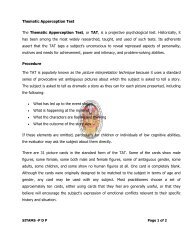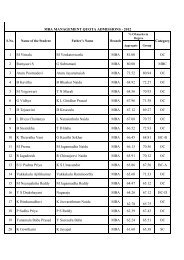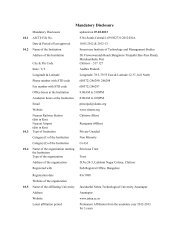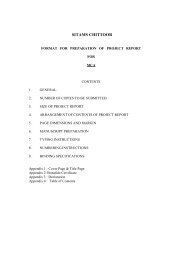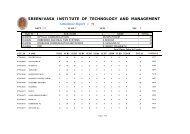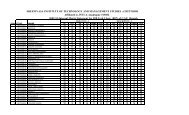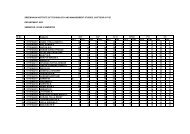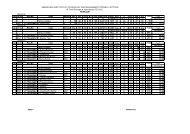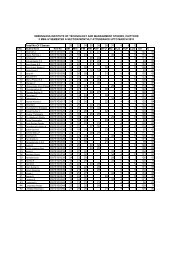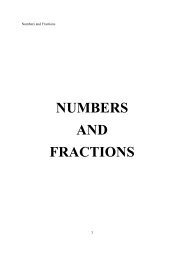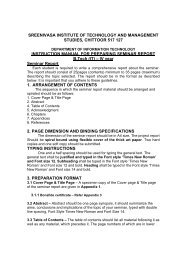COURSE MODULE NAME PERCENTAGES
COURSE MODULE NAME PERCENTAGES
COURSE MODULE NAME PERCENTAGES
You also want an ePaper? Increase the reach of your titles
YUMPU automatically turns print PDFs into web optimized ePapers that Google loves.
Module Objective:<br />
<strong>PERCENTAGES</strong><br />
What is percentage?<br />
The word percent can be understood as follows:<br />
Per cent => for every 100.<br />
So, when percentage is calculated for any value, it means that you calculate the value for every<br />
100 of the reference value<br />
Why Percentage?<br />
Percentage is a concept evolved so that there can be a uniform platform for comparison<br />
of various things. (Since each value is taken to a common platform of 100.)<br />
Eg: To compare three different students depending on the marks they scored we cannot directly<br />
compare their marks until we know the maximum marks for which they took the test. But by<br />
calculating percentages they can directly be compared with one another.<br />
Before going deeper into the concept of percentage, let u have a look at some basics and tips for<br />
faster calculations:<br />
Prerequesties(Important facts and formulae):<br />
1. Concept of Percentage:<br />
By a certain percent, we mean that many hundredths. Thus x percent means x hundredths,<br />
written as x%.<br />
To express x% as a fraction: We have , x% = x/100.<br />
Thus, 20% =20/100 =1/5; 48% =48/100 =12/25, etc.<br />
To express a/b as a percent: We have, a/b =((a/b)*100)%.<br />
Thus, ¼ =[(1/4)*100] = 25%; 0.6 =6/10 =3/5 =[(3/5)*100]% =60%.<br />
2. If the price of a commodity increases by R%, then the reduction in consumption so asnot to<br />
increase the expenditure is<br />
[R/(100+R))*100]%.<br />
If the price of the commodity decreases by R%, then the increase in consumption so as to<br />
decrease the expenditure is<br />
[(R/(100-R)*100]%.<br />
3. Results on Population: Let the population of the town be P now and suppose it increases at the<br />
rate of R% per annum, then :<br />
1. Population after nyeras = P [1+(R/100)]^n.<br />
2. Population n years ago = P /[1+(R/100)]^n.<br />
4. Results on Depreciation: Let the present value of a machine be P. Suppose it depreciates at the<br />
rate<br />
Percentages<br />
2



